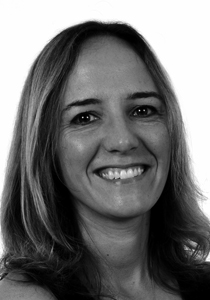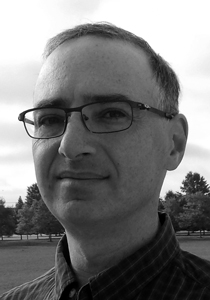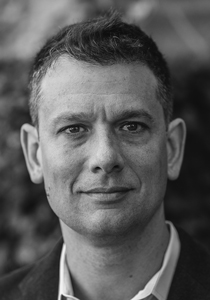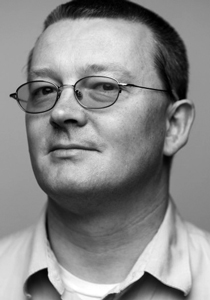Citation for Annmarie Carlton

Annmarie Carlton is awarded the 2017 Ascent Award for fundamental advances in the aqueous phase chemistry of particles, clouds, and fogs to understand the formation of secondary organic aerosols.
Annmarie Carlton has pioneered our understanding of aqueous phase reactions leading to the formation of secondary organic aerosols (SOA). Early in her career, she performed seminal experimental studies showing that pyruvic acid is oxidized by OH in the aqueous phase to generate much lower volatility acids that remain in the particle phase when the water evaporates. This, together with the fact that pyruvic acid is formed from the aqueous phase oxidation of methylglyoxal, a gas phase product from a large variety of organics, meant that aqueous processes might lead to important new sources of SOA. She also showed that the inclusion of these reactions in models could bring models and field measurements into agreement in conditions with high relative humidity. Furthermore, she led a major collaborative field study called the Southern Oxidant and Aerosol Study (SOAS), which is an exceptional achievement at this stage in her career.
Annmarie has over 45 peer-reviewed articles in leading atmospheric chemistry journals. She has taken on a variety of service positions, in addition to leading the SOAS field campaign. Her colleagues describe her as engaging and energetic, with superb leadership skills. These are the qualities of someone who will influence our science for years to come.
On behalf of the AGU Atmospheric Sciences section, I am pleased to present a 2017 Ascent Award to Prof. Annmarie Carlton.
—Joyce E. Penner, President, Atmospheric Sciences Section, AGU
Response
Thank you very much for the kind citation and honor. I had the remarkable good fortune of landing in the supportive atmospheric science community. I am truly delighted to be recognized and receive this distinction. I am extremely thankful to the nominators and selection committee for the time spent and interruption to their busy schedules.
When Barb Turpin first introduced me to the idea that particles could form in the atmosphere from organic chemistry in clouds, it seemed like magic to me. It turns out that getting to play a role in the community’s discovery of evidence was, in fact, magical.
The Southern Oxidant and Aerosol Study is an excellent example of what my research community accomplishes when we come together. I am indebted to many prominent scientists, the original coalition of the willing, Jose Jimenez, Ron Cohen, Allen Goldstein, Paul Shepson, Joost de Gouw, Paul Wennberg, Alex Guenther, Rob Pinder, and my encouraging friends and mentors. In my mind’s eye I see you all clearly at the first SOAS discussions in the hallways and mezzanine at the AGU Fall Meeting. In many ways I accept the Ascent Award on behalf of you.
Finally, a special shout out to my children, Reilly and Reese Carlton. Time not spent with you had better be worthwhile. Thoughts of you inspire me to do good science, communicate it well, and be a better human.
—Annmarie Carlton, University of California, Irvine
Citation for Larry W. Horowitz

Larry Horowitz is awarded the 2017 Ascent Award for his pioneering research in developing world-leading, global three-dimensional models of atmospheric chemistry particularly as it interfaces with meteorological and climate processes.
Throughout his career, Larry Horowitz has been the primary developer of a suite of atmospheric chemistry models, starting with his addition of isoprene chemistry to the Harvard GEOS-Chem model, to the National Center for Atmospheric Research MOZART model, to several versions of the Geophysical Fluid Dynamics Laboratory (GFDL) climate model. His leadership in the development of atmospheric chemistry models has led to a number of highly cited papers. One highlight of his work with MOZART was a study of the role of methane and isoprene’s role in the distribution of ozone and nitrogen oxides. Another highlight using the GFDL model was his investigation of the sensitivity of the regional distributions of ozone and aerosols to deposition mechanisms. He has had multiple collaborations across a number of institutions. Larry’s approach to scientific leadership embodies the core values of AGU, especially through his “unselfish cooperation in research.” This has led to more than 150 publications in peer-reviewed high-impact journals, together with an h-index of 55. Larry has been a pioneer in the modeling of chemistry–climate interactions as well as chemistry–air quality implications and linkages.
As one of Larry’s colleagues states, “I attribute Horowitz’s understanding of atmospheric chemistry and ability to implement that accurately in three-dimensional models as essential, critical guidance to the field. Horowitz has enabled, participated in, and in part directed much of the curiosity-driven, wild-question science of this collective body of research in atmospheric chemistry and climate.”
On behalf of the AGU Atmospheric Sciences section, I am pleased to present a 2017 Ascent Award to Larry Horowitz.
—Joyce E. Penner, President, Atmospheric Sciences Section, AGU
Response
I am grateful and honored to receive the 2017 Atmospheric Sciences Ascent Award. I appreciate this recognition of my research, and I would like to thank my nominators and the awards committee for this honor.
I am fortunate to have worked, throughout my career, at excellent institutions with amazing mentors and colleagues. First, I would like to thank Daniel Jacob, who introduced me at Harvard to the exciting field of atmospheric chemistry and who provided a fantastic model of how to be a scientist and to conduct collaborative research. Guy Brasseur provided me with the wonderful opportunity to broaden my research to include chemistry–climate interactions and to build strong collaborations with many scientists at the National Center for Atmospheric Research. I am indebted to Chip Levy, who brought me to the NOAA Geophysical Fluid Dynamics Laboratory (GFDL), provided encouragement and mentorship, and helped me to establish my career there. The breadth of scientific activities being undertaken at GFDL and Princeton has provided a wonderful environment for my research, allowing me opportunities to explore Earth system modeling and to interact daily with outstanding colleagues. In particular, I would like to thank our laboratory director, V. Ramaswamy, for his support and mentorship, and all of my GFDL colleagues, including Leo Donner, Ron Stouffer, and Isaac Held, for their generous advice and friendship.
Finally, I would like to thank my family—especially my wife, Terri, and our children, Jillian and Lucas—for their constant love and support.
—Larry W. Horowitz, Geophysical Fluid Dynamics Laboratory, NOAA, Princeton, N.J.
Citation for Gabriel Vecchi

Gabriel Vecchi is awarded the 2017 Ascent Award for his creative scientific advances associated with understanding the effects of climate change on the dynamics associated with the Walker circulation, the Hadley circulation, and tropical cyclones.
Gabe Vecchi has used his strong background in observational diagnostics, combined with excellent dynamical insights, to produce a number of key findings that have been highly cited in the literature. For example, in a 2006 Nature paper, he showed that observed changes in the Walker circulation could be attributed to human-induced climate change. In 2007, he also examined how changing large-scale climate affects vertical wind shear in the tropics, an issue of great relevance for tropical storms. He has also published a study on climate change and hurricanes. He examined how a changing observational network has significantly influenced our ability to quantify tropical storm changes over the past century. He extended this work to show how modern observing systems capture far more short-lived tropical systems, thus making the interpretation of longer-term trends more problematic. He has also led efforts to develop both dynamical and statistical models for seasonal hurricane prediction, with significant skill in predicting landfalls of Category 4 and 5 hurricanes.
Gabe has also been involved in community service through his work on a number of national and international committees and working groups. For example, he has served as cochair of the US CLIVAR Hurricane Working Group. He exemplifies the qualities needed to continue to advance the field of climate change and dynamics and is richly deserving of a 2017 Ascent Award. On behalf of the AGU Atmospheric Sciences section, I am pleased to present a 2017 Ascent Award to Gabriel Vecchi.
—Joyce E. Penner, President, Atmospheric Sciences Section, AGU
Response
It is a great honor to be one of the recipients of the 2017 AGU Ascent Award. I am astounded to find myself in the company of such accomplished awardees. I am grateful for the effort that went into nominating me for this award. Thank you to Anna, Emil, and Maja—it’s hard to leave you when I go to work.
I am thankful for the amazing environments that have supported and encouraged my scientific pursuits, with fantastic colleagues to inspire and challenge me. Thank you, Don Altman, for introducing me to oceanography; it changed my life. I owe much to Rutgers University and the University of Washington for providing rich and challenging environments. Thank you, Mohamed Iskandarani, for my first taste of research. I owe so much to Ed Harrison, always generous with ideas, support, and friendship, and delicate in criticism.
I am lucky to have spent over a decade with GFDL’s people, who made my research better, broader, and more fun. I thank my mentor and friend Tony Rosati, whose creativity and generosity I strive to emulate, and Ants Leetmaa, for taking a chance on me. I am grateful to Tom Delworth, Keith Dixon, and Tony Broccoli for their support, inspiration, and advice. Brian Soden, Gabriele Villarini, and Jim Smith, thank you for making research enjoyable and rewarding. Thank you, Isaac Held, Tom Knutson, and Ming Zhao, for teaching me about the tropical atmosphere. I will long treasure having been part of a talented, passionate, and energetic group at GFDL, and I am inspired by the success of its members.
I have had such a fulfilling time trying to understand our climate system, and I am excited to have started the second half of my career at Princeton University, where I look forward to new adventures and discoveries.
—Gabriel Vecchi, Princeton University, Princeton, N.J.
Citation for Robert Wood

Robert Wood is awarded the 2017 Ascent Award for his seminal contributions to our understanding of physical processes controlling marine boundary layer clouds and their interactions in the Earth’s climate system.
Rob Wood is a world recognized leader in the investigation of stratocumulus clouds, their interactions with aerosols, and their role in climate system. He first formulated the relationship between temperatures at 700 hPa and the surface (the “estimated inversion strength”) and cloud fraction, which is able to largely explain the regional and seasonal variations in stratus cloud amount. He found that cloud fraction is strongly linked with the LWP spatial variability at horizontal scales of 10–50 km, indicating the importance of organized mesoscale cellular convection (MCC) to understand and predict low cloud coverage and variability in the subtropics. He has linked the properties of MCC with precipitation, and with large-scale meteorological drivers, and connected the macrostructure of MCC with microphysical processes that under some circumstances can result in the catastrophic loss of aerosol particles, leading to transformations in MCC. He has also developed new and novel methods for the use of satellite data to understand mixing in clouds and enhance our understanding of the role of precipitation in the marine boundary layer. He has led, or has played leadership roles in a number of field experiments (VOCALS, CSET, and ORACLES, and the Eastern North Atlantic Measurement site on Graciosa Island in the Azores), that have led to immense advancements in our understanding of marine boundary-layer cloud systems, which play a critical role in the cloud feedback to climate change.
There is little doubt that Rob will continue to advance atmospheric sciences, particularly that involving clouds and is richly deserving of this award. On behalf of the AGU Atmospheric Sciences section, I am pleased to present a 2017 Ascent Award to Robert Wood.
—Joyce E. Penner, President, Atmospheric Sciences Section, AGU
Response
I am honored to receive the AGU Ascent Award in recognition of my work on marine boundary layer clouds. I am extremely grateful to the scientists who selflessly gave their time and energy to support my nomination.
There are many people who have given me opportunities, insights and guidance throughout my career. I am indebted to my Ph.D. adviser Peter Jonas for giving me my first experience in airborne atmospheric research at the University of Manchester in the UK. This gave me the bug for airborne research that has been a strong component of my research throughout my career. Doug Johnson at the Met Office helped me get started in airborne cloud physics research and introduced me to large international field experiments. It was at the Met Office that I met Paul Field who has been a long-time collaborator on various projects related to clouds. His drive and outside-the-box thinking has led to some very enjoyable projects. Dennis Hartmann and Chris Bretherton at the University of Washington provided a raft of opportunities to explore cloud processes by incorporating satellite data, observing the eastern Tropical oceans, and introducing me to cloud-scale and simple theoretical modeling. I am extremely grateful to all my colleagues at the University of Washington for their insight, intellect, and enthusiasm, all with a wonderful spirit of collegiality. I am indebted to my research group members past and present, who have allowed me to pursue new ideas and directions.
Finally, I would like to thank my parents for their unwavering support, and especially my wife, Socorro, for giving me the freedom to pursue a career that involves considerable time away from home.
—Robert Wood, Department of Atmospheric Sciences, University of Washington, Seattle
Citation:
(2017), Carlton, Horowitz, Vecchi, and Wood receive the 2017 Atmospheric Sciences Ascent Award, Eos, 98, https://doi.org/10.1029/2017EO084901. Published on 18 October 2017.
Text © 2017. The authors. CC BY-NC-ND 3.0
Except where otherwise noted, images are subject to copyright. Any reuse without express permission from the copyright owner is prohibited.
